 Energy
Energy
Energy drives economies and sustains societies. Energy growth is directly linked to well-b...
Continue Reading
 Ship Construction
Ship Construction
We have historical expertise in this sector and Turkish marine sector is one of the top fi...
Continue Reading
 Construction
Construction
We become a solution partner in large projects such as buildings, bridges, airports and st...
Continue Reading
 Repair and Maintenance
Repair and Maintenance
We become a solution partner in large projects such as buildings, bridges, airports and st...
Continue Reading
 Automotive and Transportation
Automotive and Transportation
We offer effective solutions to the automotive, railway and trailer industries with the we...
Continue Reading
 Education
Education
Education for Gedik brand is a paramount activity to raise not only exceptional engineers...
Continue Reading
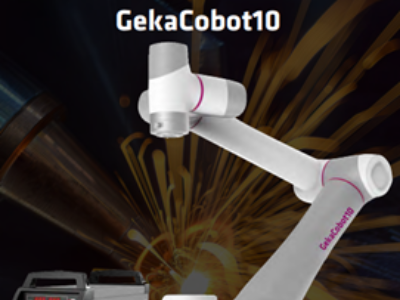
Today, accelerating production lines, reducing costs, and increasing process flexibility are more important than ever. It is precisely in response to these needs that GekaCobot 10 emerges. This robotic welding system, which stands out for its quick deployment, ease of use, and flexible installation, offers businesses a modern automation experience.Graphical ProgrammingProgramming traditional welding robots has always been laborious, difficult to learn, and requires experience. However, thanks to the buttons on the robot arm and its graphical interface, GekaCobot 10Provides easy and intuitive programming,Makes learning easier,Shortens programming time.Teach-Pair Programming: True Collaboration with the RobotOne of the most impressive features of the GekaCobot 10 is its ability to create trajectories by manually dragging the robotic arm. The operator physically guides the robot to the desired position, and the system converts this into a welding program.This feature not only speeds up the process but also gives the user full control, even on complex workpieces.Safety First: Smart Stop and Collision DetectionSafety is, of course, the most critical aspect of industrial robots. The GekaCobot 10 prioritizes safety by immediately cutting off the power with an emergency stop button.In addition, thanks to its collision detection feature, the robot enters self-protection mode in the event of unexpected contact. In hazardous welding environments, this feature is a major plus for both operator and equipment safety.Flexible Operation with Five Different Oscillation PatternsNo two workpieces are the same; every industry and every production process has different welding needs. GekaCobot 10 supports five different welding oscillation patterns: linear, triangular, spiral, trapezoidal, and sinusoidal.This variety allows the system to be used comfortably in both large and small-scale production.Power MIG GPS 5000-R: The Powerful Heart of the SystemThe Power MIG GPS 5000-R welding machine, which works perfectly with GekaCobot, creates excellent welds with different welding modes such as Dual MIG, Pulse MIG, and CV MIG. Thanks to the perfect communication compatibility between GekaCobot 10 and Power MIG GPS 5000-R, data is transmited smoothly without being affected by electromagnetic interference in the environment. This duo works reliably in harsh industrial conditions.PortabilityGekaCobot 10 weighs only 40 kg!The light weight of the GekaCobot 10 stands out as its most important feature that sets it apart from industrial robots. It can be easily transported and set up at different welding stations and quickly put into operation.It is suitable for use on welding tables. It makes your welding tasks easy and enjoyable with welding tables and fixture solutions. Please contact our sales team for welding tables and fixture solutions.Click here for the GekaCobot10 General PDF.Click here for the GekaCobot10 Detailed PDF.
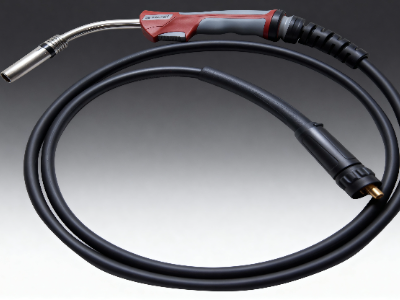
How many types of welding torches are there?The torch, which delivers the protective gas and weld metal to the welded area, enables the welder to weld. Torch types also vary according to the welding machine and material. Torches are divided into three types: MIG-MAG type torches, which we call gas metal arc torches; TIG torches used in TIG welding machines and plasma cutting torches.The Machine and the Torch Should Be CompatibleWhen we look at gas metal arc welding torches, the machine and the torch need to have the same amperage. For example, for a 500-amp machine, a torch with a 500-amp carrying capacity should be used. Having a very long torch is also a disadvantage for the welder because transmission problems can occur. The welding torch should be as short as possible whenever possible.How It Is Used Affects the Life of the TorchIncreasing the lifetime is a factor also in the hands of the welder. In the field, welding torches are the parts most exposed to heat. It is the part that is exposed to the most heat right in front of the arc and the bathroom. There are some common usage mistakes that we frequently come across. For example, instead of pulling the machine to move it, the machine is pulled by holding the torch. This damages the connection parts of the torch. Or a piece can fall on the parts of the torch that are on the ground, or it can be stepped on. There should be a place to hang the torch after the welding work is finished. It is possible to increase the service life by cleaning the burrs that splash into the nozzle during welding, or even by spraying a chemical spray. There are Three Consumable Materials In MIG/MAG torches used in gas metal arc welding, the part most exposed to heat is the nozzle. It is made of copper, and some versions are chrome-plated. Just behind the it, there is a component called the contact tip, and behind that is the diffuser, which distributes the protective gas during welding. And right after that, there is a tip holder, which is also made of copper. These are motly the products that we call pure materials, and since the contact tip is the part most exposed to heat, it is replaced at regular intervals. In these, materials containing zirconium are more resistant to abrasion and have a longer service life.It Is Possible to Use LongerFor example, the service life of a contact tip varies depending on its application and the amperage used. However, careful handling by the welder can significantly extend the lifespan of such components. For instance, if burrs stuck to the nozzle is removed by hitting it, the nozzle may become bent, reducing its service life. In contrast, when the nozzle is cleaned using a hand tool, no damage is caused to the part.Types of Torches According to Cooling MethodWater-cooled torches circulate water from the machine's connected cooling unit to the neck of the torch. This water circulation, passing through the torch neck and trigger handle, helps prevent the torch from overheating during welding. In this way, the torch is effectively cooled by water.Air cooling, on the other hand, means that the torch is cooled by the surrounding air. These cooling methods apply not only to TIG welding torches but also to MIG/MAG welding torches.
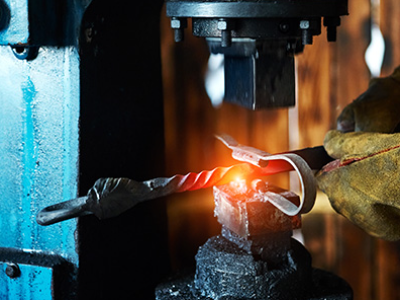
What are Tool Steels, What are their Types?Tool steels are steels with high hardness, toughness or high temperature resistance used in shaping a wide variety of materials by processes such as machining, cutting, drilling, pressing, casting, and forging. It is divided into four groups as cold work tool steels, hot work tool steels, plastic tool steels, and high-speed tool steels:Cold Work Tool Steels: Tool steels used in applications below 200 °C are in this group. Abrasion wear is often encountered on tools. The hard wear resistant carbides required for steels are usually provided with chromium, molybdenum, vanadium, and tungsten. Threading tools, scissor knives, cutting tools, bolt head forging tools, and deep drawing tools can be given as examples to this group.Hot Work Tool Steels: They are tool steels used at temperatures above 200 °C. High temperature resistance is provided by elements such as molybdenum, tungsten, and vanadium. Forging dies, forging tools, casting dies, continuous casting rolls, hot cutting blades, and hammering dies, can be given as examples for hot work tool steels.High Speed Tool Steels: They are tool steels that can remove chips by maintaining their hardness even at high temperatures, in a way that the end of the tool will be hot. In addition to adding elements such as tungsten, molybdenum, and vanadium chromium to the material, hot rolling and special heat treatment suitable for the material should be applied for homogeneous distribution of carbides in order to give the material the desired strength at high temperatures. Cutting and drilling tools that maintain their hardness even at 600 °C can be given as an example for this group.Plastic Work Tool Steels: They are generally used in shaping plastics by injection, extrusion, blowing, and pressing techniques. Compared to other tool steels, they have higher corrosion resistance, polishability, and patterning capabilities. They contain alloying elements such as chromium, manganese, molybdenum, nickel, vanadium, and aluminum.How to Perform the Welding of Tool Steels?Steels containing more than 0.2 percent carbon have low welding capability. Welding of tool steels with a carbon ratio of 0.8 - 1.5% is a very difficult process due to the high risk of cracking. Hence, repair and maintenance welding are applied in tool steels rather than joining. Welding is mainly applied in processes such as hard facing applications of worn surfaces and repair of cracks, except for the joint welds made for the revision of the mold due to the design change and the obligation of combining the prepared parts into a mold.Preliminary Preparation: It is important to control and prepare beforehand the surface of the part before the welding application of the tool steels. Surface cleanliness should be checked and factors such as oil and dirt have to be cleaned before application. Whether there are cracks on the surface of the part or not should be examined visually or with a penetrant test and, if there is any crack formation, it must in any case be cleaned by intervening before welding. “U” welding end should be preferred in welding end design.Preheat: It is important to preheat before welding. Preheating reduces the risk of warping and cracking by reducing the cooling rate. The preheating temperature should be below the tempering temperature of the tool steel and 50-100 °C above the martensitic transformation temperature of the weld metal to be used. During welding, the weld zone should always be kept within this temperature range. Preheating temperature is recommended as 200-300 °C for tool steels made of low alloy steels, 300-400 °C for tool steels made of high alloy steels, 400-600 °C for hot work tool steels, and 400-500 °C for high-speed tool steels. Heating should be slow and homogeneous. The recommended heating rate is 50 °C/hour.Welding Application and Selection of the Filler Material In the welding of tool steels, attempts must be made to keep the heat input low. Welding methods with low heat input such as TIG should be preferred, and if electric arc welding is to be applied, electrodes with as small diameter as possible should be used. It is recommended to weld by using minimum voltage and current parameters in all welding methods.After each pass, the slag cleaning should be performed carefully and lightly hammered while the seam is hot. Slow cooling of the seam after welding is important.Sharp corners and edges should not be allowed to form after welding. Crater formation should be prevented at the end of welding.In hard filling applications that require multiple passes, the number of passes should not exceed 3. Buffer welding can be applied between the base material and the hard filling application.GeKatec 229 SUPER electrodes can be used for buffer welding or GeKa Elox SG 312 MIG or TIG wires for gas metal arc welding applications.In tool steel welding applications, the chemical composition of the tool steel, the heat treatment condition, and the desired hardness value if hard filling is to be applied, play an important role in the selection of the filling material. In normalized tool steels, the chemical composition of the filler material is desired to be the same as that of the tool steel, while in hardened tool steels, the properties such as hardness and temperature resistance of the weld metal are expected to be similar.While GekaTec Tool 60 electrode is used in hard filling applications of cold work tool steels, very satisfactory results are obtained with GeKatec Tool 55 SG and GeKatec Tool 60 SG arc welding wires and rods. The welding filler of GekaTec Tool 60 electrode and GeKatec Tool 60 SG arc welding wires and rods are in the structure of speed steel and are also preferred in hard filling applications of high-speed steels. GeKatec Tool 45 SG welding wire, which is used in filler welding of hot work tool steels, provides very good resistance to abrasion and impact at high temperatures.

Our Chairwoman of the Board at Gedik Holding, Hülya Gedik, participated in an interview broadcast on CNBC-e at our Gedik Kaynak production facility in Hendek. The program was moderated by Şafak Tükle.During the discussion, current developments in the industrial and economic agenda were addressed. Hülya Gedik shared her insights on global trade balances, Turkey’s competitiveness, and the future of the industry. She also provided perspectives on the operations within our production facilities and Gedik’s strong position in the sector.Bloomberg HT “60 Minutes”: The Impact of International Trade on TurkeyOn September 25, Hülya Gedik appeared on Bloomberg HT’s “60 Minutes” program as the Chairperson of the DEİK Turkey-India Business Council. The discussion focused on the potential effects of the free trade agreement between the European Union and India on Turkey.Hülya Gedik emphasized the significance of this development for both the economy and industry, sharing her views on how changes in global trade dynamics could influence Turkey’s competitiveness and the future of its industrial sectors.Meeting with Students at SUBÜ: Sharing Knowledge and ExperienceOur Chairwoman of the Board, Hülya Gedik, met with the academic staff at Sakarya University of Applied Sciences (SUBÜ) upon the invitation of the Career Center.During the event, she shared her knowledge and experiences with students in an engaging talk aimed at inspiring their career journeys. Hülya Gedik expressed her gratitude to Rector Prof. Dr. Mehmet Sarıbıyık and the Career Center team for organizing the program.

Quick, Accurate, and Reliable Access to InformationThe GEDIQ Artificial Intelligence Assistant has been developed to ensure that users can access the information they need quickly, accurately, and reliably. With its comprehensive data structure, it simplifies information access for both individual users and business partners.Easy Access to Product InformationGEDIQ provides detailed descriptions of Gedik Kaynak products. It delivers all items featured in the product catalogs along with their technical details, enabling users to access all necessary information about a product from a single point.Comprehensive Information About Gedik Holding and Group CompaniesThe assistant is not limited to product information—it also shares extensive content about the companies under the Gedik Holding umbrella. This allows users to access up-to-date information about the activities and corporate structure of the Gedik Group.Sales Network and Contact InformationGEDIQ also provides information about the sales network located in Turkey and different regions of the world. Users can easily find the contact details of their regional sales managers and access the dealer networks specific to their location.A New Era in Digital TransformationWith GEDIQ, Gedik Kaynak has taken another user-focused step by digitalizing the process of information access. This AI-powered assistant stands as a tangible example of the company’s digital transformation vision, representing innovation, accessibility, and technological advancement.
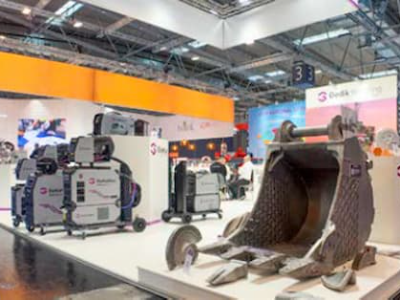
SCHWEISSEN & SCHNEIDEN 2025 was held from September 15–19 in Essen, Germany. As one of the most prestigious meeting points for welding and cutting technologies, the fair brought together industry professionals from all around the world. Gedik took its place at this major event, showcasing its innovative solutions and wide range of products.International Collaborations and Technology PresentationThroughout the exhibition, visitors were introduced to the latest advancements in welding technologies. At the same time, international collaborations were strengthened, and valuable insights about the future of the industry were shared. This event provided a significant opportunity for Gedik to demonstrate its innovative approach and global vision.62 Years of Experience and a Global VisionWith 62 years of experience and industry expertise, Gedik continues to showcase its leadership and innovative solutions in welding technologies on international platforms. The company’s global vision reinforces its goal of being a pioneer in welding and cutting technologies.